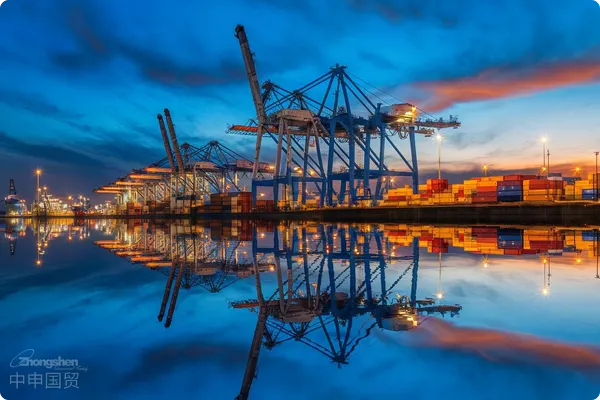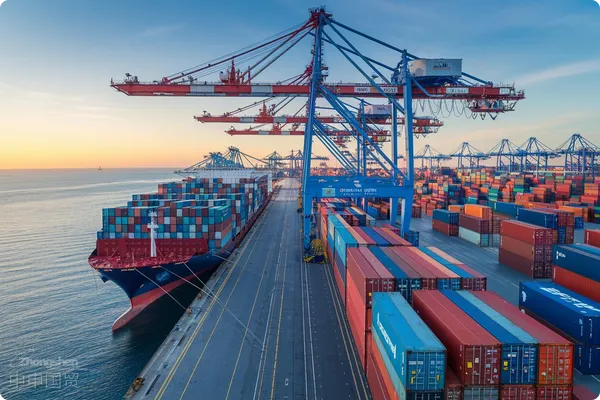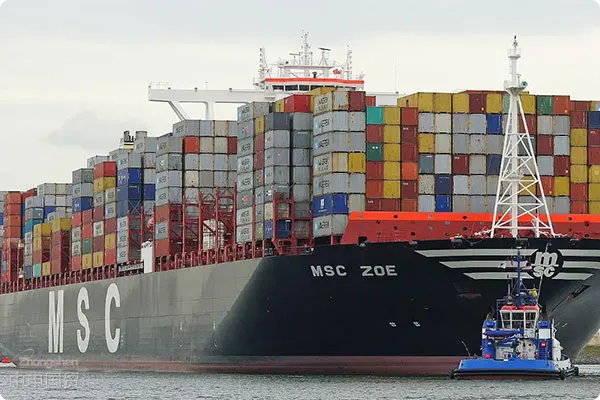- Shanghai Zhongshen International Trade Co., Ltd. - Two decades of trade agency expertise.
- Service Hotline: 139 1787 2118
Since the reform and opening up, our country hasforeign tradeachieved leapfrog development in foreign trade. In 2024, Chinas foreign trade continued to maintain a stable growth trend. The total volume in the first ten monthsimport and exporthas reached 36.02 trillion yuan, hitting a new high for the same period in history. Against the backdrop of the gradual normalization of export trade, correctly and efficiently handlingExport Clearanceexport formalities is of crucial importance to enterprises.
The speed and efficiency of export declaration directly affect the capital turnover and market competitiveness of enterprises. According to statistics, the total value of Chinas daily exported goods is approximately $150 million. Therefore, any delay in export verification or tax rebate will have a huge economic impact on enterprises and their customers. Thus, accurately understanding and mastering an efficient export declaration process is the key for foreign trade enterprises to succeed in the highly competitive international market.

I. Preparation Work before Export Declaration
Prepare Necessary Documents and Certificates
- Commercial Invoice: The value, quantity, type, etc. of the goods should be listed in detail. At the same time, it should include the complete information of the exporter and the importer.
- Packing list: List the packaging situation of each item of goods, such as packaging materials, quantity, size, etc.
- Bill of Lading: A key document to prove the transportation status of the goods.
- Other Supporting Documents: Including export manuals, clearance certificates, export licenses, etc. The specific requirements depend on the product category and the regulations of the destination country.
Confirm the Regulatory Requirements of the Destination Country
- Tariff Situation: Thoroughly understand the tariff rates of the destination country, reasonably calculate the costs, so as to formulate appropriate export strategies.
- Import Restrictions: Clarify the possible import quotas and other restrictive policies of the destination country to avoid unnecessary export obstacles.
- Product Standards and Specifications: Ensure that the goods meet the quality, safety, labeling and packaging requirements of the destination country to ensure smooth market entry.
Check the Classification and Coding of Goods
- Customs Code (HS Code): Determining the correct HS Code is of vital importance. The HS Code currently used in China has a total of 10 digits, with the first 8 digits being the main code and the last two digits being the additional code. Enterprises can query the code through various online tools, such as the WCO website or the customs websites of various countries, to ensure the accuracy of classification.
II. Specific Process of Export Declaration
Compile the Customs Declaration Form
The customs declaration form should be filled in accordance with the format specified by the customs, accurately providing detailed information including the name, quantity, value, weight, origin, mode of transportation, etc. of the goods. Ensure that the filling of the customs declaration form is true and accurate, and achieveconsistency between documents and consistency between documents and goods, that is, the customs declaration form must be consistent with contracts, invoices, packing lists and other documents, and also consistent with the actual situation of the goods.
Submit the Customs Declaration Application
The exporter or its entrusted customs declaration enterprise needs to submit the customs declaration application at the specified time and place:
- 2 - 3 days: Usually, it should be declared within 24 hours before loading after the goods arrive at the customs supervision area.
- Declaration Method: You can choose to declare through an agency company or by yourself, and use electronic data or paper customs declaration forms for declaration.
Customs Declaration Review
The customs will conduct strict reviews of the customs declaration form and related documents, mainly including:
- Data Review: Check the completeness and accuracy of the customs declaration form and related documents.
- Goods Inspection: Conduct on - site inspections if necessary to ensure that the goods are consistent with the declared content.
- Classification Review: Classify the goods to determine the applicable tariff code number.
If it is found that the customs declaration form is incomplete or inaccurate, the missing information or relevant supporting documents should be provided in a timely manner to ensure a smooth customs review.
Pay Tariffs and Fees
The calculation of tariffs is based on factors such as the category, value and quantity of the goods. In addition, it may also involve value - added tax, consumption tax and import - link tax, etc. The specific payment methods vary by country and region.

III. Customs Release and Cargo Transportation
Release Procedures and Requirements
After the customs conducts a second review of the customs declaration form and related documents and confirms that there are no errors, it issues a release notice. This process includes:
- Data Review: Check the completeness and consistency of all documents.
- Goods Inspection: Depending on the actual situation, the customs may conduct sampling inspections or comprehensive inspections of the goods.
Once the confirmation process is successfully completed, the goods can leave the customs. This process usually takes from a few hours to several days.
Operations within the supervised area
Within the supervised area, the movement of goods is strictly controlled. For example, special commodities such as food and pharmaceuticals need to meet specific hygiene standards and quality requirements, and high - tech products may require specific technical certifications or export licenses. Enterprises must closely cooperate with the regulatory authorities to ensure the smooth release of goods.
Coordination with freight forwarders
- Logistics Coordination: Communicate with freight forwarders to determine the best transportation method and route to ensure that the goods are delivered to the destination on time and safely.
- Goods Tracking: Use modern logistics technology to monitor the transportation status of goods in real - time.
- Prepare Customs Clearance Documents: Ensure that all documents are complete during the transportation process to smoothly pass through various checkpoints.
Conclusion
Export declaration is a complex and crucial process. Enterprises need to make full preparations in advance, strictly abide by all relevant regulations, choose reliable freight forwarders, and maintain effective communication with all parties. Only in this way can enterprises steadily take the first step in international trade, ensure the smooth progress of the entire process, and achieve broader development in the fierce global market.
Related Recommendations
? 2025. All Rights Reserved. Shanghai ICP No. 2023007705-2  PSB Record: Shanghai No.31011502009912
PSB Record: Shanghai No.31011502009912










